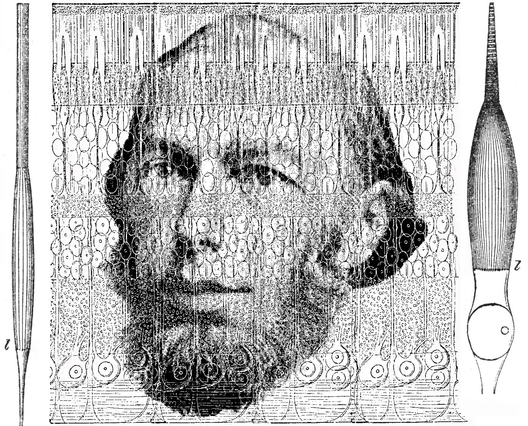Max Schultze1825–1874
Schultze succeeded Helmholtz in the chair of anatomy at Bonn in 1859, when Helmholtz moved to Heidelberg. In the first volume of his Treatise on Physiological Optics Helmholtz was able to state that: “The retina is composed partly of the microscopical components of the nervous system (nerve fibres, ganglion cells and nuclei), and partly of certain characteristic elements, the so-called rods (bacilli) and cones (coni)”. In the Supplement to the first edition Helmholtz (1867) gave the dimensions of rods and cones (approximately 0.002 and 0.005 mm, respectively) as determined by Schultze. Only cones were present in the fovea, and outer segments were small (0.002 mm). Schultze (1866) also examined the complement of rods and cones in a variety of animals, and was able to suggest that rods and cones have different functions. This is the basis of duplicity theory, one of the fundamental features of visual neuroscience. He is shown in his diagram of the retina, flanked by his representation of a single rod (left) and cone (right).
